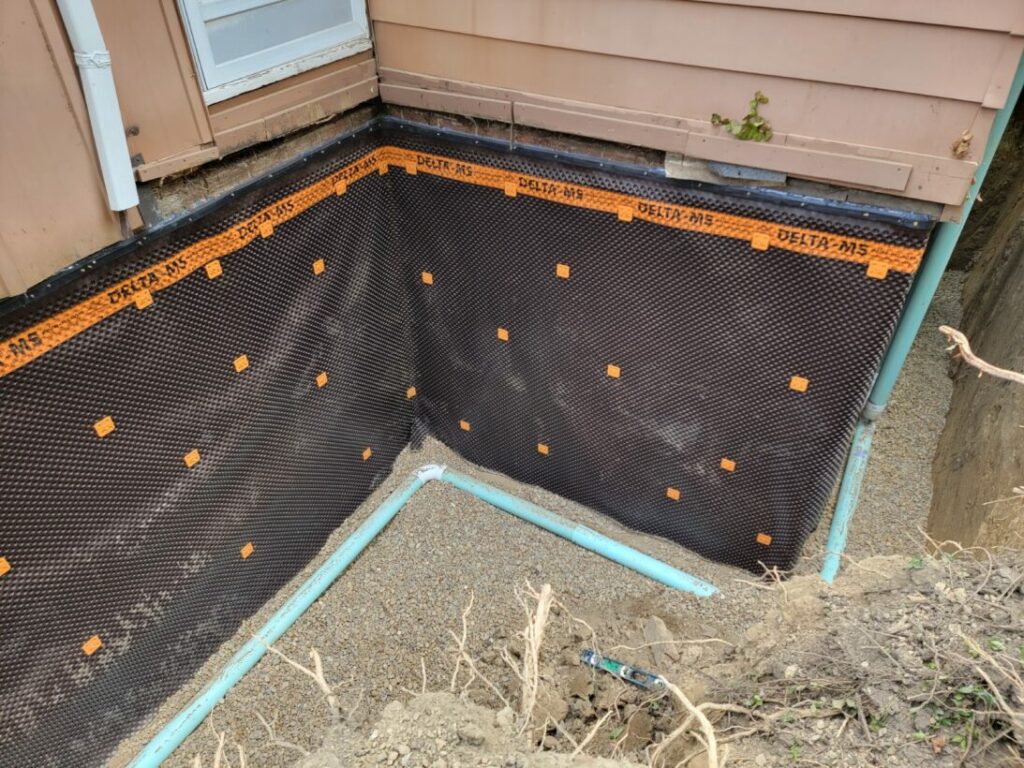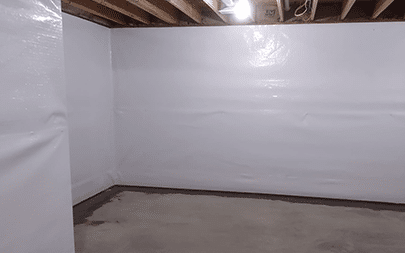6 Smart Exterior Drainage Solutions That Homeowners Swear By
Wiki Article
Exploring the Numerous Approaches of Basement Waterproofing and Their Benefits
Basement waterproofing is essential for preserving a completely dry and secure environment. Different techniques exist, each with distinct benefits. Interior sealants secure against moisture intrusion, while outside systems attend to drain issues. Sump pumps and French drains take care of water properly, and dehumidifiers control moisture levels. Comprehending these choices can assist home owners make informed decisions. Yet, the appropriate remedy frequently depends upon particular circumstances and demands. What elements should one take into consideration when picking the very best approach?Interior Sealants: A Reliable Obstacle Against Dampness
Interior sealers act as an important line of defense versus moisture breach in cellars. These items are created to produce a waterproof obstacle on walls and floors, successfully protecting against water from seeping in. Available in various forms, including finishings, paints, and sealants, they can fill up cracks and pores in concrete, making certain an extra secure environment.The application process normally involves cleaning the surfaces to remove dust and particles, followed by the cautious application of the sealer. As soon as treated, these items enhance the durability of the basement while minimizing moisture degrees, which can result in mold and mildew growth and architectural damage.Moreover, interior sealants are often simple to apply and can be a cost-effective service for house owners aiming to mitigate wetness problems. By giving a reliable layer of defense, they play a vital role in securing the cellar area, protecting both its stability and usability.Exterior Waterproofing Systems: Shielding Your Structure
When home owners seek to protect their foundations from water damage, exterior waterproofing systems offer a robust solution. These systems commonly entail using water-proof membrane layers and drainage systems to the outside walls of a cellar. By creating an obstacle versus groundwater, they effectively protect against dampness from penetrating the foundation (Water Solutions).One significant benefit of outside waterproofing is its capacity to attend to the resource of water intrusion prior to it gets to the interior. This positive approach not only safeguards structural integrity yet additionally improves the longevity of the home.Moreover, exterior systems can improve the overall drain around the foundation, reducing hydrostatic stress. This decreases the opportunity of cracks and heaving that can result from water buildup. Because of this, property owners can appreciate a completely dry, steady cellar environment, substantially improving home worth and convenience. Eventually, outside waterproofing systems are a crucial investment in preserving a healthy home structure
Sump Pumps: Managing Water Build-up Effectively
Sump pumps play a necessary role in handling water buildup in cellars, providing an effective service for homes susceptible to flooding or excess moisture. These devices are mounted in sump pits, typically situated at the most affordable factor of a basement, where they gather water that permeates in from the surrounding soil. When the water level rises, the sump pump triggers, efficiently draining the excess water to a marked water drainage area, thereby preventing possible damage to the foundation and indoor spaces.There are 2 main sorts of sump pumps: submersible and pedestal. Submersible pumps are mounted underwater, making them less visible and frequently quieter, while pedestal pumps are situated over the sump pit and are easier to preserve. By efficiently taking care of water accumulation, sump pumps not only safeguard against architectural damages however also add to a much healthier living environment by lowering humidity degrees and preventing mold and mildew growth.French Drains: Redirecting Water Away From Your Home

Dehumidifiers: Minimizing Moisture Degrees for a Drier Environment
Basement waterproofing entails different methods, and dehumidifiers play a substantial duty in preserving a completely dry environment. By successfully minimizing moisture degrees, dehumidifiers help prevent wetness accumulation, which can cause mold growth, structural damages, and undesirable smells. These gadgets function by drawing out excess dampness from the air, producing a much healthier and extra comfy space.In enhancement to improving air quality, dehumidifiers can enhance the effectiveness of various other waterproofing techniques, such as securing and water drainage systems. They help maintain excellent humidity levels, normally in between 30% and 50%, which is vital for avoiding condensation on walls and floors.Moreover, contemporary dehumidifiers are energy-efficient and featured attributes like programmable setups and automated shut-off, making them user-friendly. Overall, incorporating a dehumidifier into basement waterproofing plans provides a necessary layer of defense versus moisture-related concerns, therefore guarding the home's honesty.Regularly Asked Inquiries

How Long Do Waterproofing Solutions Commonly Last?
Waterproofing services normally last in between 5 to two decades, depending on the method utilized, high quality of products, and ecological problems. Regular maintenance and examinations can help prolong their efficiency and total life-span.Can I Waterproof My Basement Myself?
The private taken into consideration whether to waterproof the basement individually. They uncovered that while DIY choices exist, knowledge of strategies and products is important to ensure performance, and professional support may provide better lasting outcomes.What Are the Indications of Basement Dampness Issues?
Indicators of basement moisture concerns include visible water discolorations on Recommended Site walls, moldy smells, peeling off paint, mold growth, and dampness on floorings. High moisture levels may likewise suggest underlying dampness problems calling for interest to his comment is here avoid more damage.Just How Much Does Cellar Waterproofing Cost?
The price of cellar waterproofing varies commonly, generally ranging from $1,500 to $5,000. Aspects influencing costs include the severity of wetness problems, the selected technique, and the geographical place of the home.Will Waterproofing Increase My Home's Value?
The question of whether waterproofing boosts a home's value often develops among homeowners. Typically, effective waterproofing can boost building appeal, minimize damages dangers, and possibly lead to higher resale prices, depending on the local realty market. By producing an obstacle against groundwater, they efficiently protect against dampness from passing through the foundation.One notable benefit of exterior waterproofing is its ability to attend to the source of water breach before it reaches the inside. Sump pumps play a vital duty in handling water accumulation in basements, supplying an efficient solution for homes vulnerable to flooding or excess dampness. When the water degree increases, the sump pump triggers, efficiently pumping out the excess water to an assigned drain area, thus stopping possible damage to the foundation and indoor spaces.There are two main types of sump pumps: submersible and stand. Sump Pump Installation And Replacement. By directing groundwater and surface water away from the foundation, French drains pipes aid stop water build-up in basements and creep areas, reducing the threat of structural damages and mold and mildew growth.Installation generally happens around the boundary of the home, guaranteeing that water is successfully drawn away. Signs of basement wetness concerns consist of noticeable water stains on walls, moldy odors, peeling paint, mold and mildew development, and dampness on floorsReport this wiki page